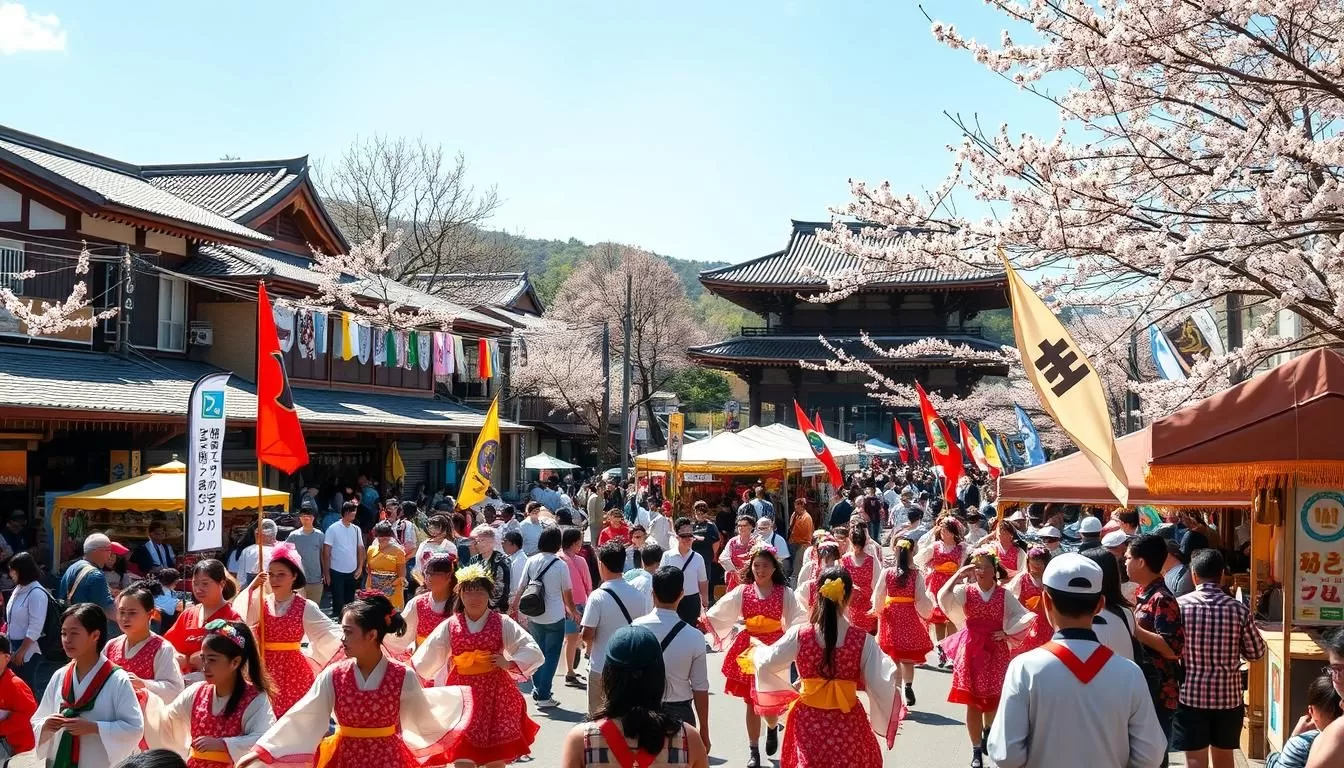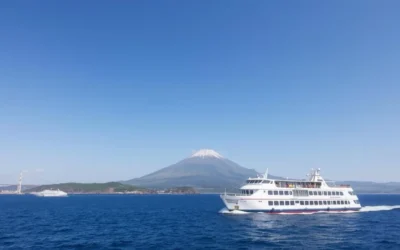✓ Accommodations✓ Flights✓ Rental Cars
As you plan your trip to the third-largest region in Japan, you’ll discover a land reborn, rich in cultural heritage and breathtaking landscapes. The area has emerged stronger after facing challenges in 2011, inviting visitors to witness its beauty and vibrant cultural scene.
The festivals in this region are a testament to its resilience and cultural pride, offering a unique experience. From ancient samurai traditions to spectacular fire celebrations, the festivals here cater to every kind of traveler. As you explore this area, you’ll be immersed in authentic Japanese culture, making your trip truly unforgettable.
Discovering Fukushima Prefecture’s Cultural Heritage
As you explore Fukushima Prefecture, you’ll uncover a rich cultural heritage shaped by its unique geography and history. The prefecture is divided into three distinct areas, each offering a unique cultural experience.
The Three Regions of Fukushima
Fukushima Prefecture comprises three main regions: Aizu, Nakadōri, and Hamadōri. The Aizu region is known for its samurai history and traditional crafts, while Nakadōri blends urban conveniences with natural beauty. Hamadōri, the coastal region, offers seaside festivals and events that showcase its connection to the ocean.
| Region | Characteristics | Cultural Significance |
|---|---|---|
| Aizu | Samurai history, traditional crafts | Preserves historical traditions through festivals and crafts |
| Nakadōri | Urban and natural blend | Hosts modern and traditional celebrations |
| Hamadōri | Coastal, seaside festivals | Showcases connection to the ocean and recovery efforts |
Fukushima’s Recovery and Renaissance
After facing significant challenges, Fukushima has experienced a remarkable cultural renaissance. Festivals have played a crucial role in revitalizing communities and preserving local traditions. The people of Fukushima have shown incredible resilience, using their traditional festivals as a way to rebuild community bonds and showcase their region’s enduring cultural heritage to the world.
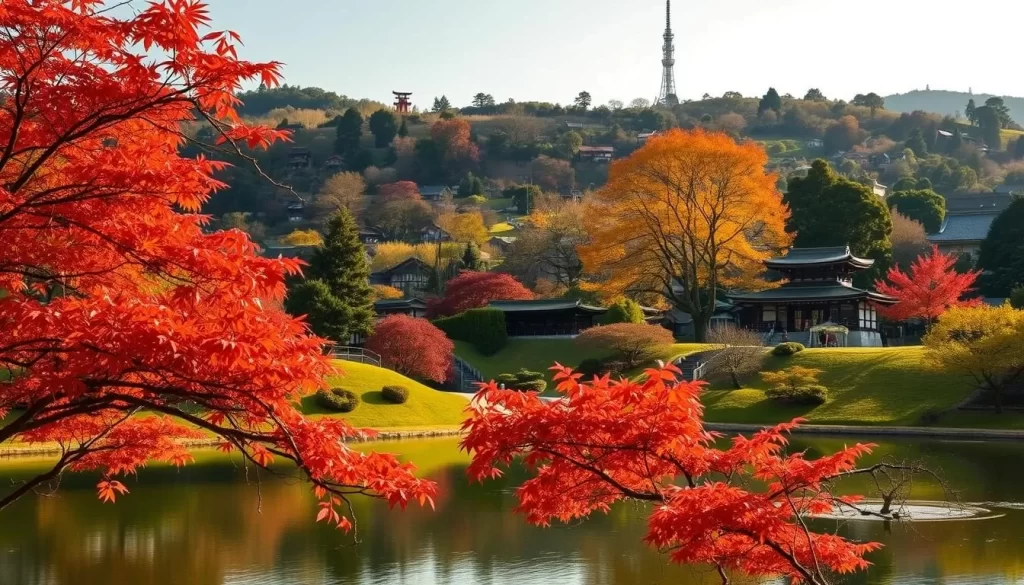
In the years since the 2011 disaster, Fukushima has made significant strides in recovery, with only a small portion of the prefecture remaining restricted. Today, radiation levels in inhabited areas are comparable to those in major cities worldwide, ensuring safety for residents and visitors.
Fukushima Prefecture, Japan: Top Festivals to Check Out When Visiting
The festivals in Fukushima Prefecture are a reflection of the region’s rich culture and community spirit. These events are not just entertaining; they are a way to experience the local traditions and history.
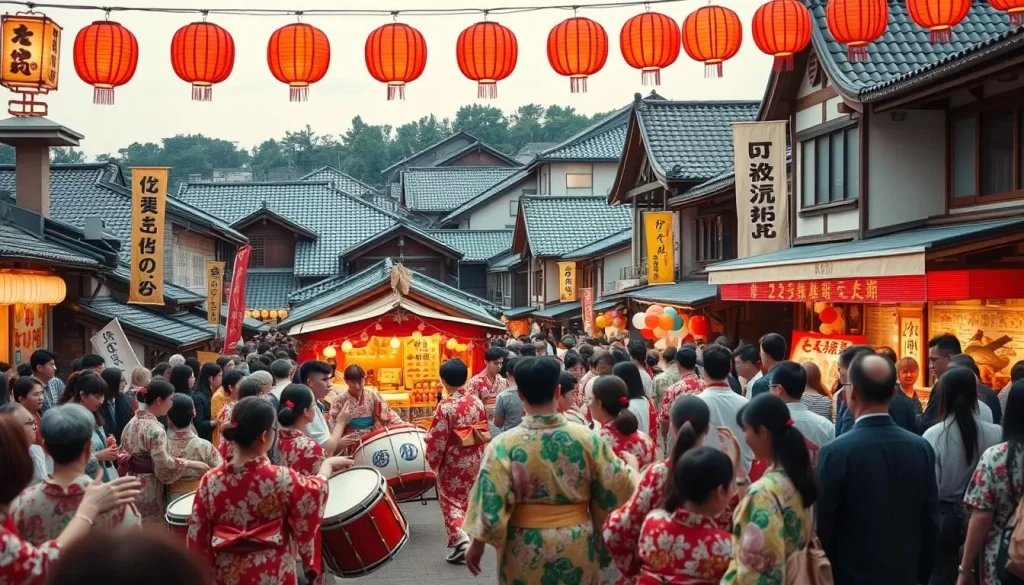
The Significance of Festivals in Japanese Culture
Festivals, or “matsuri,” hold a special place in Japanese society, serving as a link between the past and the present. They often have religious origins, honoring local deities and marking seasonal changes. In Fukushima, these festivals represent the region’s resilience and its determination to preserve cultural heritage.
Many of Fukushima’s festivals have been passed down through generations, maintaining their core cultural elements while adapting to the times. This blend of tradition and adaptation is a hallmark of Japanese cultural identity.
How Festivals Connect Communities in Fukushima
Festivals in Fukushima create a powerful sense of community, bringing people together across different age groups. These events provide a unique opportunity for visitors to witness authentic Japanese traditions that have been preserved over time.
| Festival | Location | Time of Year |
|---|---|---|
| Soma Nomaoi | Soma City | July |
| Aizu Festival | Aizu Region | September |
| Ouchi-juku Snow Festival | Ouchi-juku | February |
By participating in these events, both locals and visitors can step out of their daily routines and connect with something larger than themselves, creating memorable experiences and strengthening social bonds.
Soma Nomaoi: The Ancient Samurai Horse Festival
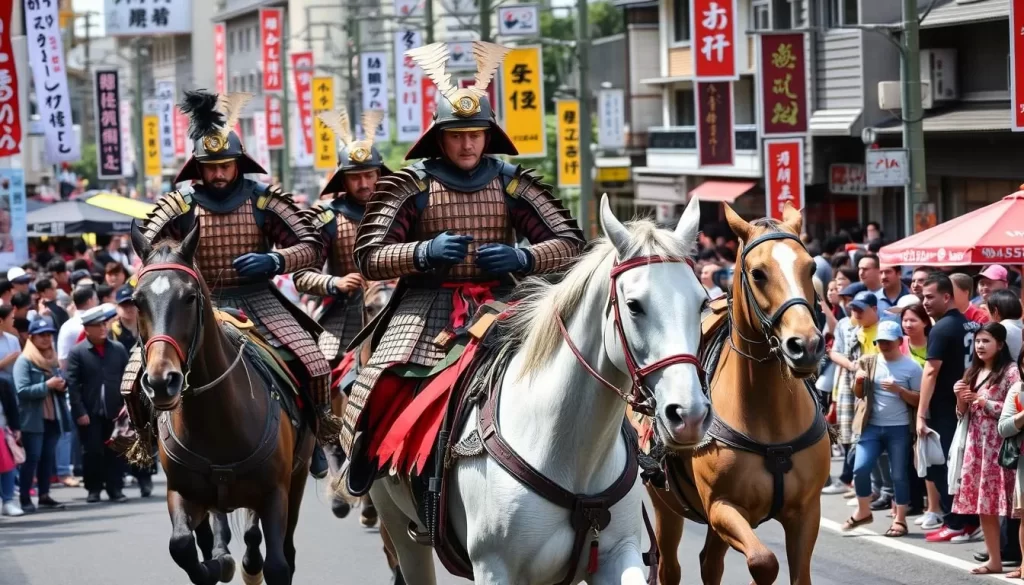
Experience the thrill of Soma Nomaoi, Fukushima’s ancient samurai horse festival, which is a dramatic display of samurai heritage. Held during the summer season, this event features horseback riders in traditional armor, racing through the streets. It’s a thrilling experience that brings history to life.
The Festival’s Roots
Soma Nomaoi is one of Japan’s most spectacular traditional festivals, dating back over 1,000 years to the Heian Period when it began as military training for samurai warriors. This three-day summer festival takes place annually in July, featuring hundreds of horseback riders dressed in full samurai armor and traditional costume.
The festival includes several thrilling events: a procession of armored warriors, high-speed horse races, and the exciting “flag catching” competition where riders compete to grab small sacred flags released into the air. When attending Soma Nomaoi, you’ll experience an authentic glimpse into Japan’s feudal past, with the thundering hooves and colorful regalia creating an unforgettable sensory experience.
Attending Soma Nomaoi
The festival attracts visitors from around the world who come to witness this living history that has been recognized as an Important Intangible Folk Cultural Property of Japan. Local families have participated in this tradition for generations, with many riders using ancestral armor and equipment that has been carefully preserved through the years.
Despite being temporarily suspended after the 2011 disaster, the festival’s resumption symbolizes the region’s resilience and determination to preserve its cultural heritage. By attending Soma Nomaoi, you’re not only witnessing a unique cultural event but also supporting the local community’s efforts to maintain their traditions.
Aizu Festival: Walking in the Footsteps of Samurai
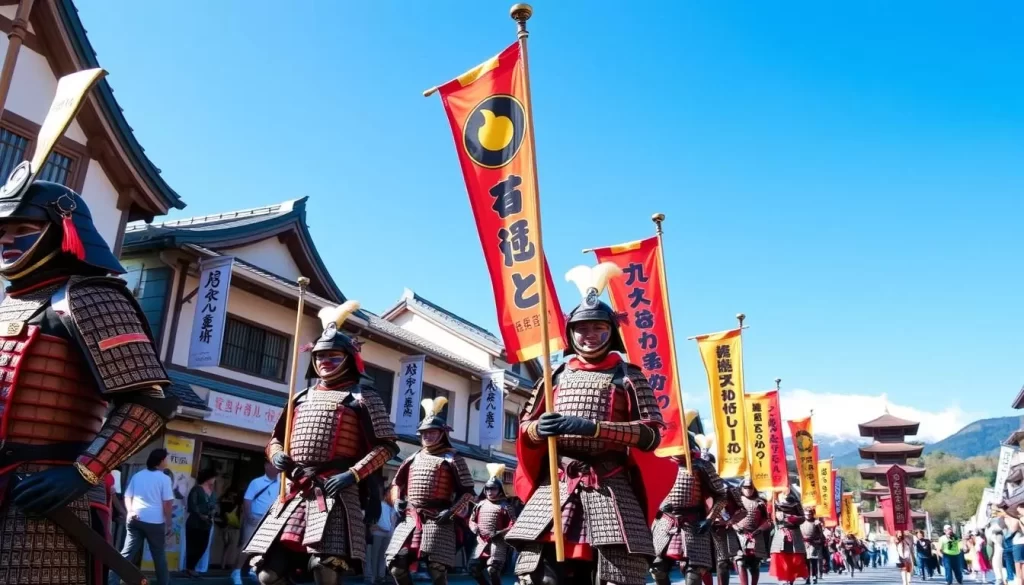
Every September, Aizu-Wakamatsu City comes alive with the Aizu Festival, a vibrant tribute to the region’s samurai heritage. This grand celebration is not just a spectacle; it’s an immersive experience into the history of the samurai, allowing you to walk in their footsteps.
The Historical Significance of the Aizu Region
The Aizu region is deeply rooted in samurai culture, having been the last stronghold of samurai resistance during Japan’s transition to modernity in the Meiji Restoration. The city of Aizu-Wakamatsu is proud of its legacy, and the festival commemorates the bravery of the Byakkotai, a group of young samurai who fought during the Boshin War.
Highlights of the Samurai Parade
The Aizu Festival transforms the streets of Aizu-Wakamatsu into a living museum of samurai culture. The highlight is the spectacular samurai parade, featuring hundreds dressed in authentic period costumes. You have the chance to participate by renting traditional costumes, making it a unique experience. The festival centers around Tsuruga Castle, a symbol of Aizu’s samurai heritage.
The festival is a celebration of the region’s proud history and offers more than just the parade. It includes historical reenactments, traditional performances, martial arts demonstrations, and local food stalls, all contributing to an enriching experience in this historic city.
Winter Celebrations: The Ouchi-juku Snow Festival
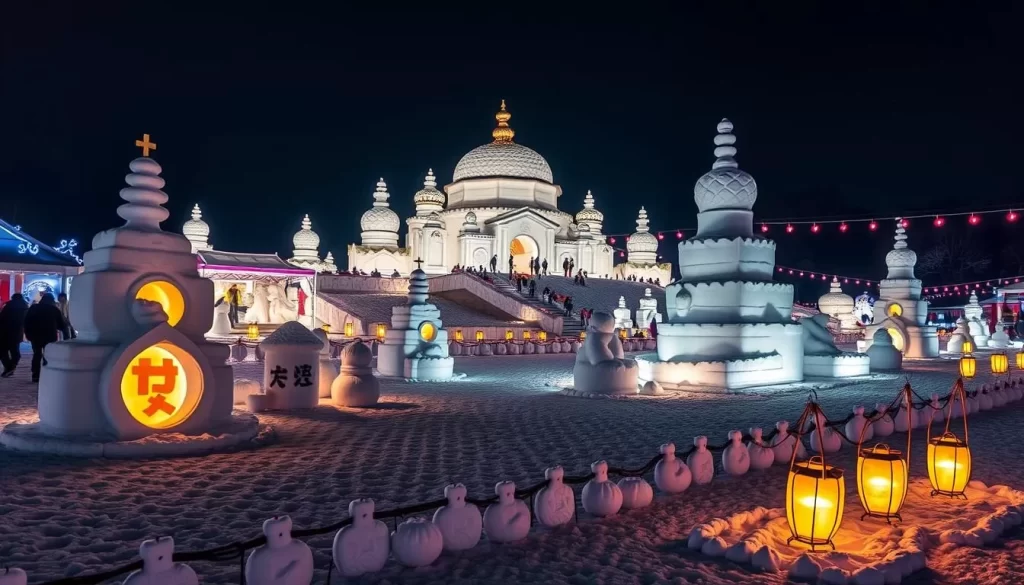
Experience the enchanting Ouchi-juku Snow Festival, a winter celebration that transforms a historic village into a magical wonderland. This annual event takes place in February, bringing to life the perfectly preserved Edo-period town of Ouchi-juku.
The Preserved Edo Village of Ouchi-juku
Ouchi-juku is a historic post town that once served as a rest stop for samurai traveling between Aizu and Edo (now Tokyo). The area is renowned for its traditional thatched-roof buildings, which create a picturesque backdrop for the festival. During the winter season, the thatched roofs are laden with snow, adding to the village’s charm.
Snow Sculptures and Nighttime Illuminations
During the Ouchi-juku Snow Festival, the village comes alive with dozens of handcrafted snow sculptures and lanterns lining the main street. As night falls, these sculptures and lanterns are illuminated, creating a magical atmosphere that attracts visitors from across Japan. The festival’s highlight is the dramatic torch parade, a tradition that dates back generations, where locals carry flaming torches through the snow-covered village.
The Ouchi-juku Snow Festival offers a unique and intimate experience, allowing visitors to enjoy traditional performances, local specialties like “negi soba,” and the warm hospitality of the rural area. It’s a perfect time to experience rural Japan’s winter beauty, with the snow-laden thatched roofs creating a postcard-perfect scene that captures the essence of traditional Japanese winter celebrations each year.
Spectacular Fire Festivals of Fukushima
Fukushima’s fire festivals are a unique blend of tradition and spectacle, illuminating the autumn nights with breathtaking displays. You can experience the region’s rich cultural heritage by attending one of these festivals.
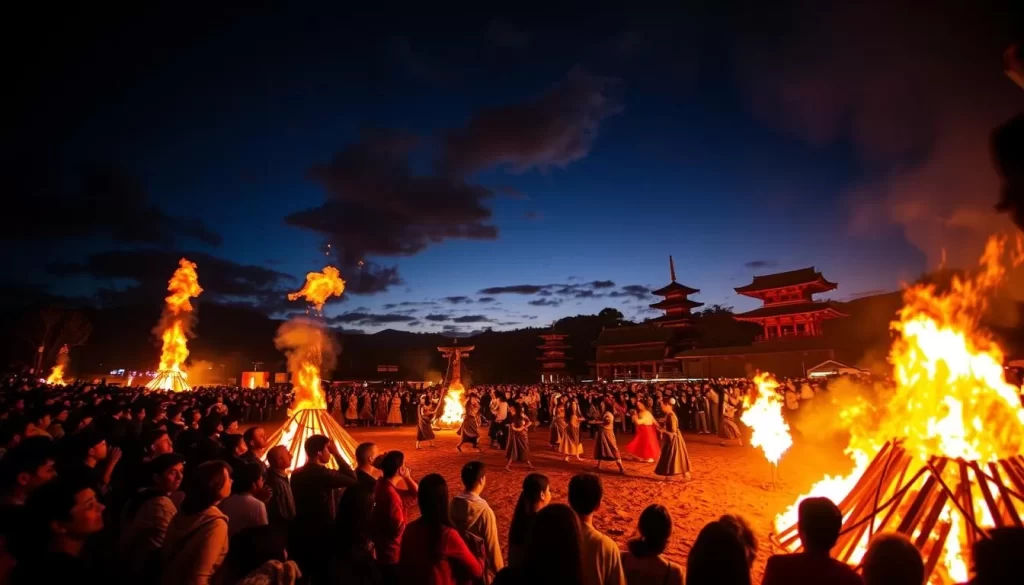
Taimatsu Akashi Torch Festival
The Taimatsu Akashi Torch Festival in Sukagawa City is a must-see event, featuring 20 enormous torches that are lit ablaze and burn through the night. These massive torches, some weighing up to two tons and standing 10 meters tall, create a mesmerizing spectacle of flames and sparks that symbolize the driving away of evil spirits and the welcoming of good fortune.
This ancient ceremony, dating back over 400 years, is a testament to the region’s cultural tradition. As you watch the torches burn, you’ll be surrounded by the vibrant atmosphere of the festival, with the fireworks display at the end adding to the excitement.
Nihonmatsu Lantern Festival
The Nihonmatsu Lantern Festival transforms the streets of the city with seven ornate floats covered in hundreds of paper lanterns, creating rivers of light that parade through the city over two autumn evenings. Each float represents a different district of the city and is accompanied by distinctive music, creating a competitive yet celebratory atmosphere.
As the floats process through the streets, you’ll be treated to a spectacular display of light and sound, culminating in a fireworks display that lights up the night sky. The combination of lanterns and fireworks creates an unforgettable scene that attracts photographers and visitors from across Japan.
Both the Taimatsu Akashi Torch Festival and the Nihonmatsu Lantern Festival offer you a unique opportunity to experience Fukushima’s fire festivals in an authentic setting, immersing yourself in the local culture and tradition.
Iizaka Fighting Festival: A Battle of Massive Floats
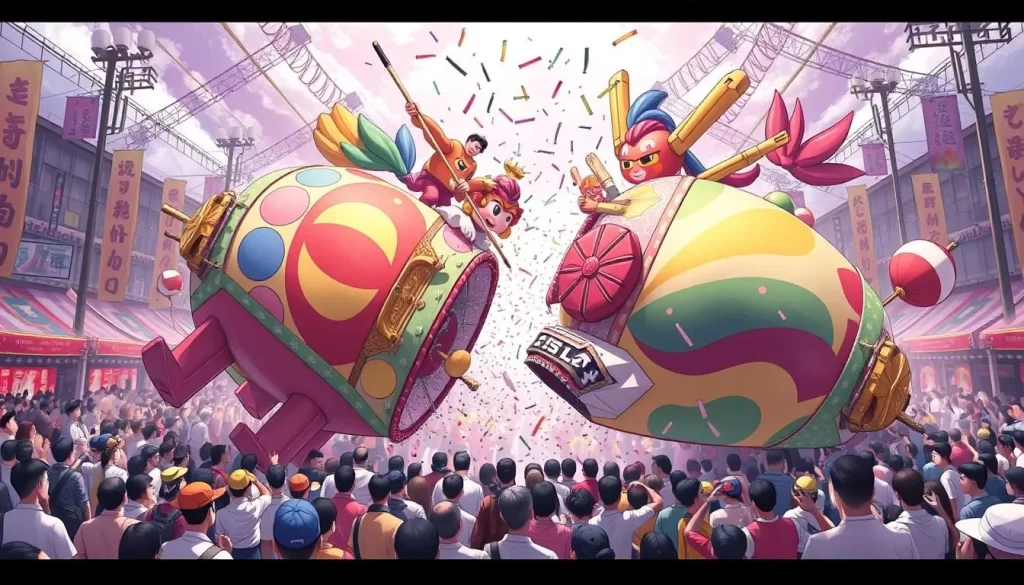
You won’t want to miss the Iizaka Fighting Festival, a spectacular display of cultural heritage. The Iizaka Fighting Festival, also known as Kenka Matsuri, is one of Fukushima’s most dynamic and exciting cultural events, taking place each October in the historic hot spring town of Iizaka.
The Origin and Meaning Behind the Festival
This centuries-old festival features enormous decorated floats (dashi) that are deliberately crashed into each other in ritualized “battles” throughout the streets, creating a thrilling spectacle of controlled chaos. The festival originated as a way to determine which neighborhood would receive the greatest blessings for the coming year.
Experiencing the Float Battles
As you experience the Iizaka Fighting Festival, you’ll be surrounded by an adrenaline-pumping atmosphere. Teams of young men shoulder these massive structures, weighing up to several tons, and navigate them through narrow streets to challenge rival neighborhoods. The crashes are accompanied by traditional music, chanting, and the sounds of wooden floats colliding, creating a multi-sensory experience. The two-day celebration culminates in spectacular fireworks displays that light up the night sky above the hot spring area, adding to the festive atmosphere, making it a fun and memorable event.
The Iizaka Fighting Festival is an unforgettable experience that combines excitement with relaxation, offering local food stalls, traditional performances, and the chance to soak in Iizaka’s famous hot springs.
Seasonal Nature Festivals in Fukushima
Fukushima Prefecture is a haven for nature lovers, with its diverse geography creating a unique backdrop for seasonal nature festivals that celebrate the region’s beauty. The changing seasons bring forth a variety of festivals that attract visitors from across the globe.
Cherry Blossom Festivals at Hanamiyama and Miharu Takizakura
In the spring, Fukushima is adorned with breathtaking cherry blossoms, particularly at Hanamiyama and Miharu Takizakura. Hanamiyama Park transforms into a natural amphitheater of pink and white blossoms, offering views that are simply spectacular. Visitors can enjoy the hillside orchards opened by local farmers, providing a panoramic view of the blooming landscape.
The Miharu Takizakura Festival celebrates Japan’s most famous cherry tree—a 1,000-year-old weeping cherry that stands 12 meters tall. This iconic tree attracts thousands of visitors during its brief but magnificent blooming season. The festival features traditional music, dance performances, and food stalls serving seasonal specialties that complement the cherry blossom viewing experience.
Autumn Foliage Celebrations at Goshikinuma Ponds
As autumn arrives, Fukushima transforms again with vibrant foliage festivals, particularly around the Goshikinuma Ponds. The “five-colored” volcanic lakes reflect the red and gold leaves, creating a picturesque place that is perfect for nature enthusiasts. Visitors can enjoy guided walks, photography contests, and evening illuminations that highlight the seasonal transformation.
| Festival | Location | Season |
|---|---|---|
| Hanamiyama Cherry Blossom Festival | Hanamiyama Park | Spring |
| Miharu Takizakura Festival | Miharu Town | Spring |
| Goshikinuma Ponds Autumn Foliage Festival | Goshikinuma Ponds | Autumn |
These nature-focused festivals showcase Fukushima’s remarkable seasonal beauty while providing structured celebrations that help visitors appreciate the fleeting beauty of each season in traditional Japanese fashion. With multiple spots to explore, visitors can enjoy the best of Fukushima’s natural landscapes.
Planning Your Festival Visit to Fukushima
To make the most of your visit to Fukushima’s vibrant festivals, it’s essential to plan ahead. Understanding the seasonal calendar and festival schedule is crucial for a memorable trip.
Best Times to Visit for Different Festivals
Fukushima hosts a variety of festivals throughout the year, each with its unique charm. Summer, particularly July and August, is the peak season with numerous festivals like the famous Soma Nomaoi. Spring and autumn are also great times to visit, with cherry blossom festivals and autumn foliage celebrations.
- Summer (July-August) is ideal for experiencing multiple festivals, including Soma Nomaoi.
- Spring brings beautiful cherry blossom festivals at Hanamiyama and Miharu Takizakura.
- Autumn is perfect for enjoying the foliage at Goshikinuma Ponds.
Transportation and Accommodation Tips
Getting to Fukushima is convenient via the Shinkansen train from Tokyo, taking about 1 hour and 30 minutes. Local buses and taxis are readily available upon arrival.
| Transportation | Details | Tips |
|---|---|---|
| Shinkansen Train | From Tokyo to Fukushima City or Koriyama stations | Approximately 90 minutes journey |
| Local Train Lines | Scenic Tadami Line connects rural festival locations | Offers beautiful views |
| Accommodation | Book in advance for popular festivals | At least 3-6 months early for Soma Nomaoi and Ouchi-juku Snow Festival |

Conclusion: Embracing Fukushima’s Festival Spirit
Visiting Fukushima during one of its many festivals is an opportunity to immerse yourself in the local culture and traditions. By participating in these celebrations, you’re not just witnessing cultural events; you’re supporting communities that have worked tirelessly to preserve their heritage. Whether it’s the Soma Nomaoi or the serene beauty of seasonal nature celebrations, each experience provides unforgettable memories. Your trip to Fukushima will reward you with authentic cultural experiences, delicious regional cuisine, and scenic landscapes that make every day of your journey special. Fukushima is a place that rewards those who take the time to explore it, making it a unique region to visit.
The above is subject to change.
Check back often to TRAVEL.COM for the latest travel tips and deals.
